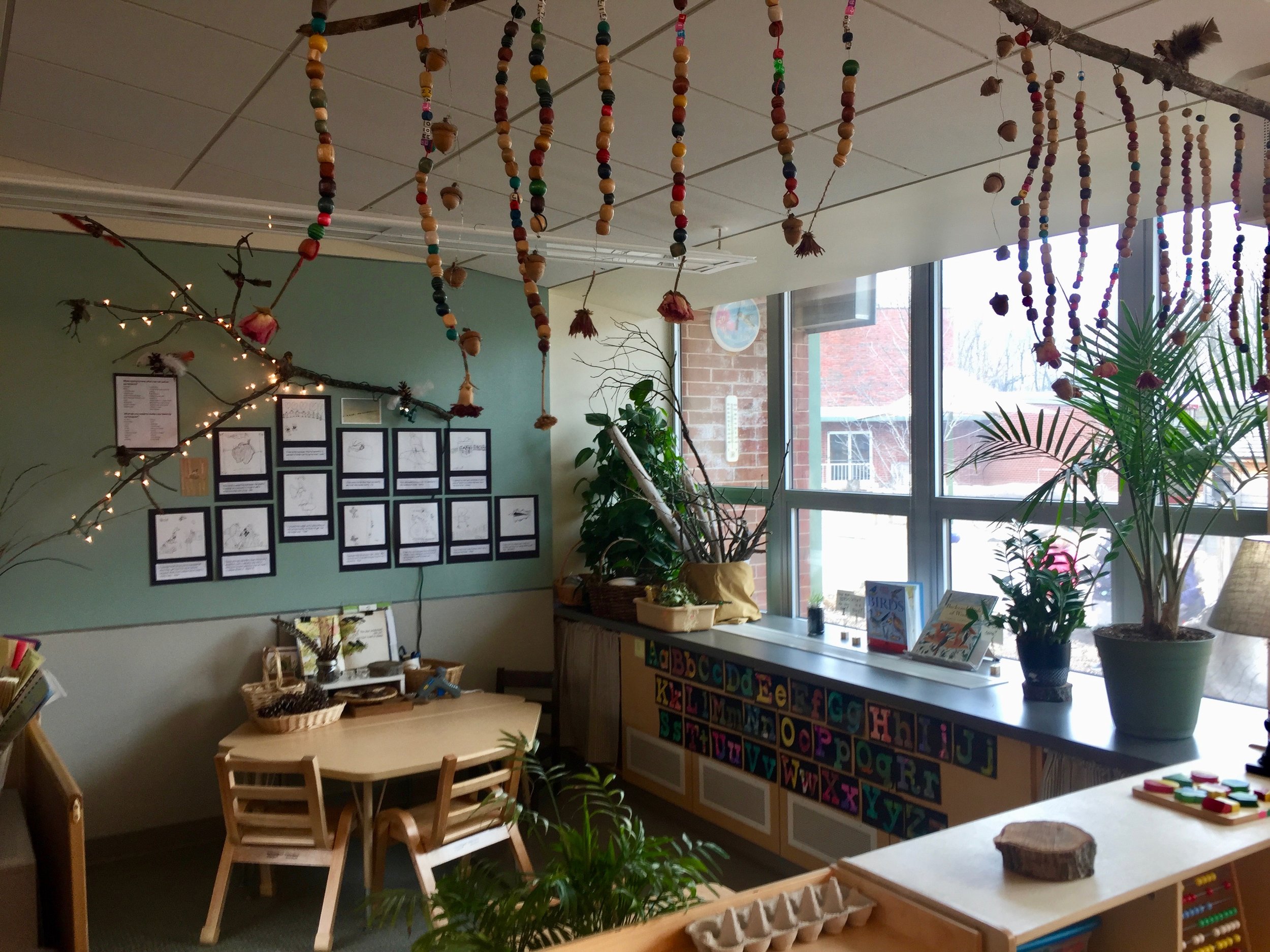Over the four years that we have worked with Principia School in St. Louis, we have seen beautiful growth and change. From time to time we ask ourselves, what did we do? What did they do? How did this transformation happen?
For the first three years, we worked with all the grades of the Lower School, preschool through grade five designing meaningful, integrated, place-based curriculum, engaging and beautiful learning environments, and documenting student work for a public audience.
This year, the elementary school began to work with Teton Valley Science School's Place-Based Learning Program (whose approach is similar to ours), with the Principia Middle and Upper Schools. Ashley and I began to focus on two early childhood classrooms and a team of 5 teachers including a studio teacher who had not previously worked with children this young. This is where we witnessed dramatic change this year...in the rooms of 3-4 year-olds and 4-5 year-olds and the studio in between.
Our dear friend and colleague, Linda Henke of the Sante Fe Center for Transformational School Leadership has developed nested patterns that allow a deeper culture of learning to emerge in schools. These include a high level of collaboration, shared leadership, creativity and courage, empathy and compassion, and a growth mindset. These are all qualities that we strive to embody as well as to nuture in the teams that we work with.
Right now, we are reading The Five Invitations by Frank Ostaseski which is a must read for insights into living fully in this life no matter our profession. Frank writes, Transformation is a deep internal shift through which our basic identities are reconstituted. It is a metamorphosis, as radical as the catapillier's movement from chrysalis to butterfly. In the process of transformation, the scales fall from our eyes, we we see and experience everything in a new way.
What changed over time? What evolved?
• The learning environments evolved from somewhat bare classrooms that featured teacher made or store bought materials to layered, organized, beautifully stocked, welcoming and irresistible spaces that featured beautiful student work.
• Rather than predictable, activity oriented themes, the project work took on new meaning and became more integrated, meaningful and dynamic, featuring authentic student learning and work.
• Rather than teacher voice, student voice began to take the lead…children’s observations, theories, their hand written phrases and titles, and their beautiful work with many materials.
• From a somewhat separate and self contained orientation, the teacher team of five became a collaborative team, learning from and with each other as the year and the projects unfolded.
What was the framework and the context that led to transformation?
• Shared reading and dialogue
• Principia Team visits to local Reggio inspired schools in St. Louis including The College School, The St. Michael School, Clayton Schools' Family Center and Maplewood Richmond Heights Early Childhood Center.
• Monthly Skype meetings with the team and/or with each classroom team with us to share progress, view environment, address questions and strategies.
• Support in composing curriculum maps for projects.
• Document sharing through google docs.
• Appreciative Inquiry emphasizing the positive change and evidence of growth as well as shared vision and design of environments and projects.
• Enthusiasm, persistence, openness and hard work on the part of the team.
• On-site visit in April to celebrate growth and transformation and to envision the future.
Teacher and Administrator Reflections:
Heather Buchanan, teacher of 3 and 4 year-olds:
Through our Skype sessions and onsite visits, Louise and Ashley have not only helped to transform our classroom environments, but also helped us become better observers, listeners and questioners. I learned to slow down, and to trust and value the process. This has enabled me to hear and see the depth and capabilities of three and four year-old children. I am in awe of what is possible when we work in this way.
Rachel Soney, teacher of 4 and 5 year-olds:
Last year was my first year at Principia, my first year teaching preschool, and the first time I had even heard of Reggio Emilia. It took time to wrap my head around what I was being asked to do, and how it fit with my understanding about teaching and learning. After a year of school visits, welcoming Louise Elmgren, the studio teacher, to our team, and work with the Cadwells, things began to click for me and for all of us. We entered a new chapter of richness and collaboration together.
Louise Elmgren, art and studio teacher:
When I thought it was done, we were just beginning.
Watching art going on inside the children, watching what their fingers said
We were there as observers, teachers, guides.
Mining for meaning among all the artifacts, encouraging us to go deeper,
Ashley and Louise were there to open our eyes to the learning at hand.
Kim Ott, Principal of the Principia Lower and Middle Schools:
This professional development has proven to be not only inspiring but sustainable as well. As thought leaders, the Cadwells have gradually created systems of support and intentional spaces for teachers to dialogue. Their scaffolded approach has helped the faculty construct a firm foundation of essential big ideas – one that will continuously guide and inform our curriculum and pedagogy. Without a doubt, Ashley and Louise have become a very special part of our school family! It has been a sheer delight to work with such knowledgeable, dedicated masters of their craft.
We are humbled and deeply gratified by this kind of transformation in practice. Goodness, it warms our hearts. The relationships that we have been privileged to develop have made this kind of learning possible for everyone. We are grateful to another team of teachers for their trust in us, their dedication to the work and their courage to engage in this process of change and growth. It makes all the difference to the lives of the children who come into their classrooms every day.





